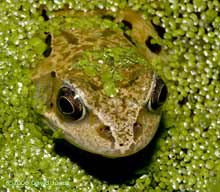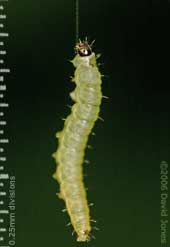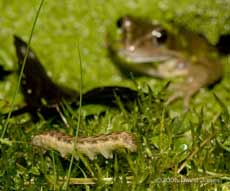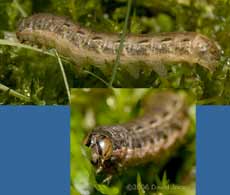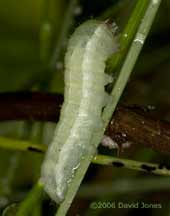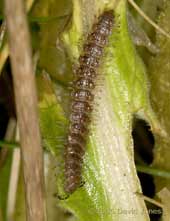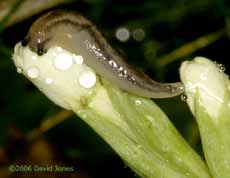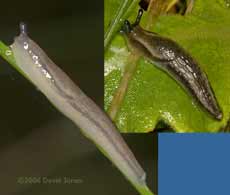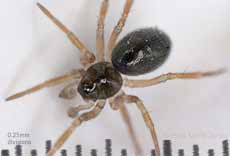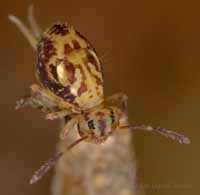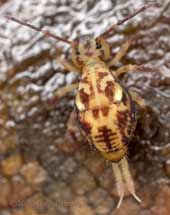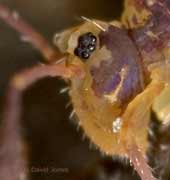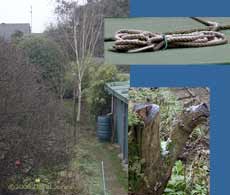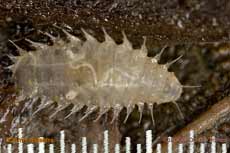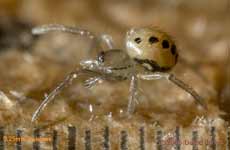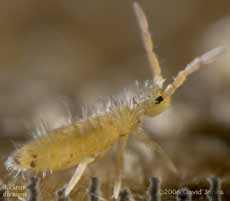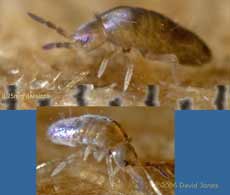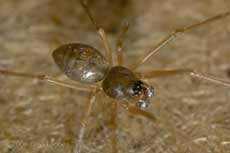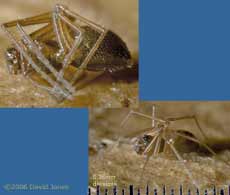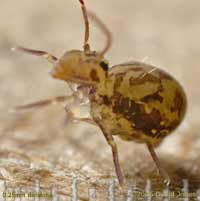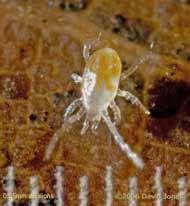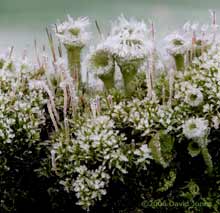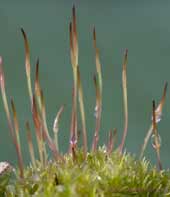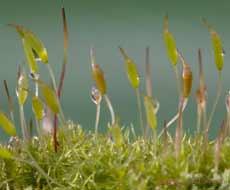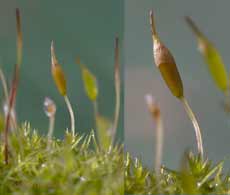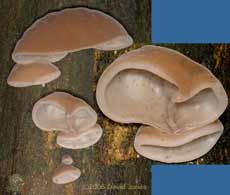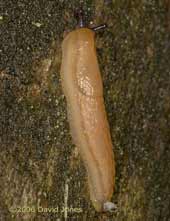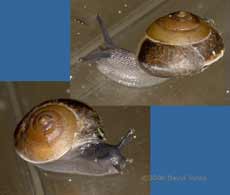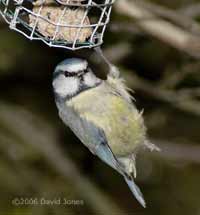Go to the last entry on this page .....Go to previous entry1 January - A Happy New Year to all of you who visit mybitoftheplanet I hope that you all have a safe and rewarding New Year, wherever in the World you are, not just in the UK, but from Ekaterinburg (in central Russia), to the Middle East, Far East, Australia and New Zealand, from the northern-most parts of Finland, through Europe, Northern and Southern Africa, from the North of Canada, through the USA, Mexico and the Caribbean, down to Uruguay After what was a louder than ever introduction to the year, thanks to a lot of fireworks (not ours) the night turned damp. However, the first day of the year turned out dry, with some sunshine in the afternoon and the temperature reaching 7C. I should have tried to get a photograph into today's entry (What looked as though it might turn into a half decent sunset was spoilt when clouds rolled in), but I have been doing other jobs, and fiddling with the website changes. I think all the main bits and Links are working, but there are numerous loose ends that I need to deal with in the coming days.
I couldn't see or hear any (I'll check again before heading for bed) but I did count six frogs peering out from under the duckweed on the big pond. This one was very tolerant of me until I moved a leaf out of the way, when it slipped slowly back under the weed.
2 January - A dull but dry morning with the temperature almost 7C at 1pm. Looking back at last January's diary I was finding caterpillars at the start of the month, so I decided to look for them again this morning. While there are signs of caterpillar damage to low growing plants around the ponds, I haven't found any caterpillars there so far. However, I did find this individual, hanging at the end of about 15cm of thread (just visible in the photograph) attached to a frond of bamboo leaves. Its length of just 6mm, along with a slight breeze that kept the leaves moving presented quite a challenge, as well as a step ladder! When I found it, the caterpillar was slowly climbing up the thread and held a small bundle of silk between its legs. Every so often it would set up a vigorous side to side vibration. Is this an action designed to confuse would be predators? I should point out that it wasn't dark when I took this picture - I had to use a fast shutter speed and flash to cope with its constant movement.
The hunt for the caterpillars seen last January should have waited until after dark! This picture was taken at around 7pm, showing one grazing amongst the wet moss and other small plants on the bank of the big pond, oblivious to the interest being taken in it by the frog.
The top image in this pair is a closer look at that caterpillar, with its rear end almost suspended in the air. A few centimetres to the left was this second individual (lower image), which didn't quite come out into the open to get a good shot of its head. They were both about 2.5cm in length.
A correction (thanks to Richard Clark for this one) - Although I originally thought that these are Winter Moth larvae, Richard tells me that they are more likely to be the caterpillars of the Large Yellow Underwing Moth (Noctua pronuba) or another noctuid species. N. pronuba caterpillars feed at night until mid-Winter, hiding in the soil during the daytime, and then hibernate before completing their growth in the Spring. They pupate underground in May and emerge as adult moths in June/July.
3 January - A dull, mild morning became a miserable, damp day with heavy drizzle which has continued into the evening - it's 9C outside at 7pm. To collect today's pictures I've just resorted to an old beach brolley and a wooden board to kneel on (I don't think the neighbours saw me!) next to the big pond.
First of all, the reason for the umbrella's use this evening - another caterpillar. This one, on grass, measures about 2cm in length. There are quite a few types that look similar in my caterpillar book so I don't think I'll guess an ID without help. I'll have to watch out for it again to try for a shot of the head. There was also another Large Yellow Underwing caterpillar nearby.
Next is this millipede, one of three that I saw in the few minutes I was outside. I believe it is probably Polydesmus angustus, and measures 20-25mm in length. These normally feed on dead leaves and other rotting plant material (although it seems that they are also fond of strawberries).
I'm still waiting to see the first hedgehog of the new year. It's mild enough, and there is plenty of food for them in the form of many small slugs.
Something I often notice when looking at slugs is the presence of tiny, fast moving creatures that are constantly running round on their bodies. These are mites, and if you look at the larger image you will see one on this slug. It seems that they may feed on the slimy mucus that coats the slug.
I'm including this pair of slug pictures to illustrate the colour variations I see in the small slugs, most of which appear to be less than 2cm in length when elongated. As usual, I am stuck as to their ID. Could they be Arion fasciatus, also known as Bourguignat's Slug?
No frog pictures tonight, but they certain were about, and one was croaking loudly as I took the photographs.
4 January - After yesterday's high of 9C, today it only got to 6C briefly in the morning. The day started cloudy, promised to get brighter at one stage, but by the afternoon had become what I think must have been the gloomiest day of the winter (although it stayed dry) - it was as though the sun had just about set by 2pm. The most annoying think about it is that after sunset the clouds vanished and the sky was clear by 5.30pm This means that at 8.30pm the temperature has dropped to below 2C. Just one picture today. When I took yesterday's pictures I notice numerous very small spiders in the moss. I collected this one today.
If you look carefully at the large image you may just make out that the carapace (the front part of the body) seems to be slightly transparent. The blue-green spot at the front is the spider's version of the photographer's nightmare - red eye!
I have done a bit of housekeeping on the diary today. When I reorganised the front page for the new year I didn't sort out the links from the left hand buttons correctly, so that visitors would not have been able to get to all the past diaries. This error has now been corrected so that all the past garden, pond and birdbox diaries are available again. Some of the diary indexes still have numerous blanks where there should be comments, and these will be added soon.
5 January - Another dry day with no morning frost and bright spells in the morning, but dull in the afternoon (but nowhere as bad as yesterday). The small hedgehog made another appearance last night, and I put out soggy bread with peanut butter and chopped peanuts - it was tucking into this when I headed for bed.
There are several types of tiny springtails to be found in it, including ones like this. While there is little chance that I can properly identify it (there are at least 300 British species), I think it belongs to the family Sminthuridae. Measuring about 1.75mm in length (see third image) it posed a challenge as it was constantly on the move.
They are called Springtails because of the forked springing organ they possess. This is normally tucked under the body but is seen extended in these first two photographs.
In this picture of a different individual you can just see the 'tail' in its normal, tucked position between the legs. The Springtail runs around the leaf litter (they are wingless insects), but if disturbed it will use the organ as a spring to catapult it into the air.
This is a cropped version of the previous picture to take close look at the sprintail's eye. It shows how it is actually a group of simple eyes (ocelli) rather than the compound eyes you usually expect to see on an insect.
I had the camera ready, but there was little sign of the snow settling. While the main picture shows the dull conditions in the garden the smaller images show the only signs of settled snow I could see from our bedroom window - on rope on top of the caravan shelter, and a log next to the path.
Last night, the small hedgehog was here again. At 9.30pm there has been no sign of it as yet tonight (it is 2.5C outside at the moment, with the pond water a degree higher). Tonight I added another item to my technical section about the use of a 28mm enlarger lens to take pictures of very small creatures such as the Springtails.
8 January - No snow, but a dull morning descended into a much dimmer and wet afternoon and evening - horrid weather! At least it's topped up the ponds. Bird activity was very quiet today, especially once it started raining. Last night the small hedgehog was here again, seen feeding at around 11pm. I'm adding this note at 10.45pm - as I write, there are two hedgehogs wandering around at this end of the garden (I'm not going to disturb them tonight). It's not really surprising to see them, as it is over 4C outside and the ground is very wet -excellent slug conditions.
9 January - The dull grey skies are still with us, but it did remain dry today. I haven't picked up the camera today. If I had, it would have been to record the two Goldfinches that turned up this morning, after an absence of over a week. Other than them there has been little to report on the bird activity here, not even the Sparrow Hawk has been to visit recently! I had an e-mail from a regular reader of this diary, and who uses Firefox as her browser. She reports that since the changes I made for the new year, she sometimes gets thin blue bands across pictures as she scrolls down the page (when using a screen resolution of 1152 x 864), and she has sent me a screen shot to illustrate the problem. Even though I use that same resolution (on a two monitor set-up), and I can test the diary in Firefox, Netscape and MS Explorer, I haven't been able to reproduce the problem. I would be interested to hear if anyone else has had a similar experience. When I changed the site ready for this year' diary I didn't alter the structure of the layout, just replaced some of the buttons on the left and changed the colour of the bottom bar, but I cannot see how these changes should cause the problem.
10 January - Another day with lights on continuously in the house, but it stayed dry, was quite breezy, and the temperature got close to 7C. The hedgehogs were here last night, and I'd be surprised not to see them tonight, but I haven't seen the Goldfinches today.
Not a pretty thing, it stayed in one place, just stretching out its front end (on the right) every so often. I haven't got any idea as to its ID.
Next, another spider - smaller than the previous example (body just over 1mm long) and boldly marked with two rows of spots on its abdomen. It's not in my spider guide, and with its more bulbous abdomen, I don't know whether it is another type of 'money spider' or a young spider of a different species.
As usual in the leaf litter there are numerous springtails, including the type pictured above. There were several species present, but I spent time trying to get a photograph of this little individual. Measuring just 1.5mm in length, while it has the ability to jump, this one ran a marathon on a sheet of damp hardboard as I tried to follow it with my camera. It's amazing how such a tiny creature can keep up such speeds for minutes on end!
Finally (for the moment at least) what I think may be another springtail, except that it didn't jump while out on the board. Just about 1mm in length (and also energetic), this posed an even greater problem to photograph, and the images are a bit too fuzzy as a result. While much darker than the first one, its exoskeleton exhibited a marked iridescence when lit up by the flash.
11 January - We saw the sun today, for all of the afternoon. The morning started off very wet, and windy, but the rain soon stopped and the day brightened!
It has dark bands around the abdomen, and the large pedipalps at the front indicate that it is probably a male. Compared with the previous two types, this one seems to have very large eyes.
When disturbed it would gather its legs into a bundle so that they seemed to protect the front end of its body. It would 'play dead' for a short time before extending its legs cautiously (bottom-right image) and continuing its wandering.
Next, another picture of one of the bulbous springtails. I've included this one because it shows a feature peculiar to springtails.
They have a tube that extends down from the first segment of the abdomen. This is known as a collophore, and is used to take in water. Also, it is sticky, helping the creature to stick to surfaces. This springtail is using a leg to clean what appears to be its collophore.
Finally, an example of the mites that appear on the rotting leaves. Noticeably smaller than the springtails, this large one is barely 1mm in length, they are every bit as energetic as the springtails as they run about the leaves.
Although you may think that the leaves provide shelter for these creatures when it rains, when I scooped up the wet leaf litter this morning, many of the leaves were stuck together by the surface tension of the rain water. I wonder how many of the inhabitants are drowned during heavy rain. There were certainly fewer animals moving about in the sample I looked at today.
12 January - The day got off to a promising start with early sunshine and a frost, although the temperature only dipped a little below 0C and when cloud cover moved in, that disappeared very quickly.
Before that happened I managed to get out in time to catch this image of the moss and lichen on old rope on the caravan roof.
Later, I went up the stepladder again to record the progress being mad by the moss. In many places along the rope the moss has clumps of these developing sporogonia. At the moment, most of them resemble long, thin stalks with darkened tips.
However, in one spot development is more advanced, with the stalk tops having swollen to form the sporogonia themselves. I first commented on these back on 16 November (including a picture of them) so it's interesting to note how they have changed in just over three weeks.
As the sporogonium develops, the capsule is covered by a cap called a calyptra. In the picture above these are not obvious while there is still dew wetting the plants, but it becomes obvious as it dries.
I'm curious as why this one clump is so far ahead of the rest, when they are all subject to the same conditions. Could it be a different species of moss? On the animal front, the hedgehogs continue to visit at night, the Goldfinches have disappeared again, but I saw the Coal Tits a number of times today. There has been no sign of any Blue Tits inspecting the birdbox. In a couple of forums/newsgroups I have seen reports of this happening elsewhere. There is definitely a pair coming to feed here so I wonder if they have started their house-hunting yet. I gave the mini-beasts a break today.
14 January - The last two days and nights haven't seen the temperature dip below 5C (last night low was around 6.5C). Today the sky stayed grey, and we had rain for a short time this morning.
In the left-hand image the top (and largest) fruit body measures about 5.5cm across. The outer surface is covered with a downy layer of fine hairs. I think that it is a Jew's Ear fungus (Hirneola auricula-judae), a very common species. It seems these are edible, and it, or a relative is an important ingredient in Chinese cooking, although I will be leaving it where it is.
Coincidentally, on the same log was this small slug. I couldn't help but notice it as it was almost the same colour as the fungus. The mild conditions really are encouraging the slug population at the moment. There are small ones just about everywhere - I hope that the hedgehogs are enjoying them, as they haven't been too interested in the chopped peanuts that I put out over the last couple of nights. At the other end of the garden, we have some bamboo plants growing in raised boxes as a screen along the boundary between us and our neighbour.
The shells measure about 1cm across and have a pale band around the circumference, which makes me think they may be Strawberry snails, a very common species which can be a serious pest, although they don't seem to do any significant damage here.
There was a solitary Goldfinch here again this morning, but otherwise the bird feeders remain very quiet, except for the regulars, and there haven't been any visitors to the BT box. There was a TV program a couple of days ago that had an item on Swift nestboxes in London. That reminded me of my intention to put up some boxes before this Spring's arrivals (after Swifts nested in our neighbour's roof last year), and today I have decided the basic design I'll use. ON the next sunny day I hope to sort out the plywood for the first of two pairs of boxes to go under the eves on the north side of the house (just around the corner from the Martin boxes).
15 January - Another grey day!
This morning it was clear to see why when it fed at one of the fat balls - it has lost a foot. Despite this injury it seems to be coping well, also taking peanut bits from the table, although I haven't been able to see how it deals with them, as the Bluetits usually use their feet to hold the peanut while they peck at it. The loss of a foot could also prove a more serious problem when dealing with caterpillars during the breeding season. I shall be watching to see how it gets on in the months to come.
I don't know how this BT lost its foot, but the injury is what I understand can result from a bird getting its claws tangled in the plastic nets that fatballs are sold in. The RSPB warns of this danger, but there must be millions of them hanging in gardens. We had a Great Tit here for several visits today, and the Sparrowhawk popped in this afternoon, although there were few Sparrows about and it soon left without success. Click on images to see larger versions - |
|
